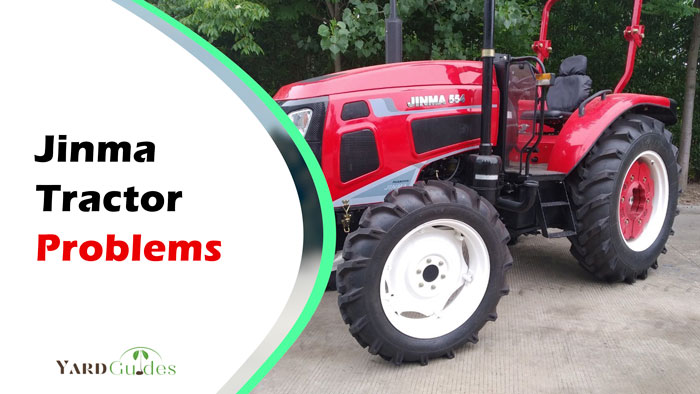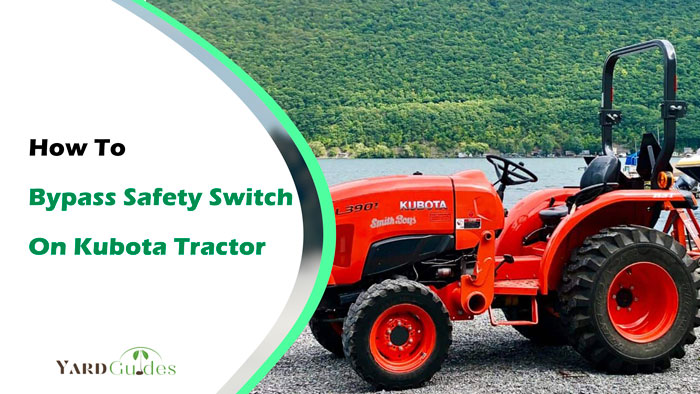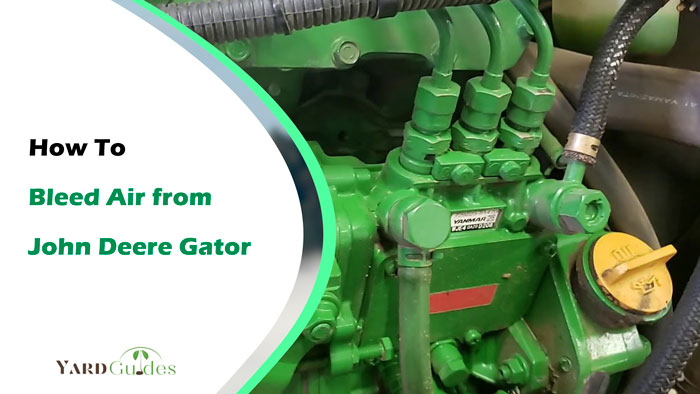Jinma tractors have gained a reputation as a reliable and affordable choice for small farmers. These versatile machines have a variety of uses, including ploughing fields, mowing grass, and moving materials. However, like any piece of machinery, Jinma tractors can experience problems.
Some of the most frequent issues observed in jinma tractors include- hydraulic leaks, steering problems, transmission issues etc.
In this article, we’ll cover the most common Jinma tractor problems and provide instructions for troubleshooting each issue.
Jinma Tractor Problems And Fixes At A Glance
Use this table as a starting point to quickly identify the issue you’re experiencing and the potential solutions.
| Problems | Solutions |
| Hydraulic leak | Check and fill fluid; inspect and repair pump and hoses |
| Steering problems | Inspect and replace steering components as needed |
| Transmission problem | Inspect and replace clutch and transmission components as needed |
Continue reading the guide to get an insight into each problem and troubleshooting them.
1. Hydraulic Leak
Hydraulic leaks can occur for various reasons, including damaged hoses or fittings, worn rubbers, or cracks in the hydraulic system components. If left unaddressed, it can reduce performance and damage the hydraulic system over time.
The most obvious symptom of a hydraulic leak is visible fluid dripping or pooling underneath the tractor. However, there are some other signs to look out for, including:
- Reduced hydraulic systems performance, such as slower or weaker lifting or dumping.
- Unusual noises such as hissing or whining sounds.
- Difficulty in maintaining pressure in the hydraulic system.
Solutions:
If you suspect that your Jinma tractor is experiencing a hydraulic leak, you can follow these steps to diagnose and fix the problem:
- Step 1- Locate the source of the leak: Use a flashlight to inspect the hydraulic system components for visible damage, and look for drips or pooling of fluid underneath the tractor.
- Step 2- Replace any damaged or worn hoses or fittings: If you identify any damaged or worn hydraulic hoses or fittings, replace them with new ones.
- Step 3- Inspect the hydraulic system components: Check the pump, valve body, and other components for cracks or damage. If you identify any issues, replace the affected component.
Check and replace seals. Worn or damaged seals can cause hydraulic leaks, so inspect and replace any seals that show signs of wear or damage.
- Step 4- Refill the hydraulic fluid. After making any necessary repairs, refill the hydraulic fluid to the proper level
2. Steering Problems
Jinma tractors rely on a hydraulic power steering system to provide smooth and responsive steering. If the steering system is not functioning properly, it can cause difficulty turning or jerky movements, which can be dangerous and make it difficult to operate the tractor effectively. Here are some common steering problems that Jinma tractors can experience and their potential solutions.
- Difficulty turning the steering wheel or excessive force required to turn it.
- Jerky or uneven movements of the steering wheel.
- Reduced responsiveness or lack of power steering assistance.
There are several potential causes of steering problems in Jinma tractors, including:
- Low or dirty power steering fluid.
- Worn or damaged steering components, such as the steering pump, steering gear, or steering cylinder.
- Loose or damaged power steering belt.
Solutions:
If you’re experiencing steering problems with your Jinma tractor, there are several steps you can take to diagnose and fix the issue. Here are some potential solutions:
- Check the power steering fluid: Ensure that the fluid level is at the proper level and is clean. If the fluid is low or dirty, flush and replace the fluid.
- Inspect the steering components: Check the steering pump, gear, and cylinder for wear or damage. If any of these components are damaged, replace them.
- Check the power steering belt: Make sure that the belt is tight and not damaged. If it’s loose or damaged, replace it.
- Inspect the steering column: Check for any damaged or worn parts in the steering column.
- Check the tires: Ensure that the tires are inflated to the correct pressure and are not damaged. If needed, fill the tires with the proper pressure.
3. Transmission Problems
The transmission system in your Jinma tractor is responsible for transmitting power from the engine to the wheels, allowing you to change gears and control the tractor’s speed. If the transmission is not functioning properly, it can cause poor performance, decreased efficiency, and even damage the tractor.
Here are some common transmission problems that Jinma tractors can experience.
- Difficulty changing gears or the gears slip out of place.
- Unusual grinding or whining noises when changing gears.
- Reduced power or speed when in motion.
There are several potential causes of transmission problems in Jinma tractors, including:
- Malfunctioning clutch assemblies, such as a slipping or worn clutch plate, damaged pressure plate or clutch release bearing.
- Worn or damaged transmission gears, bearings or shafts.
- Low or dirty transmission fluid.
- Damaged or worn-out synchronizer or shift fork.
- Malfunctioning gear selector lever or linkage.
Solutions:
If you’re experiencing transmission problems with your Jinma tractor, here are some potential solutions to fix the issue:
- Check the transmission fluid: Ensure that the fluid level is optimum and clean. If the fluid is low or dirty, flush and replace the fluid.
- Inspect the clutch assembly: Check for wear and damage to the clutch plate, pressure plate, flywheel, and release bearing. If any of these components are damaged or worn, replace them. The following video explains how to remove and replace a jinma clutch.
- Check the transmission gears, bearings, shafts, and synchronizes: Ensure that they are properly lubricated and not damaged. Replace any worn or damaged components.
- Inspect the gear selector lever and linkage: Ensure that the lever is properly aligned and the linkage is not damaged.
- Perform regular maintenance, such as oil changes and filter replacements, to ensure the transmission system is functioning properly.
Final Words
Whether you’re a seasoned Jinma tractor owner or a new user, this guide will help keep your tractor in top condition for years to come. Jinma tractors are durable and reliable machines that can handle various tasks.
They may experience common issues, such as hydraulic leaks, steering malfunctions, and transmission problems. Knowing how to diagnose and fix them can keep your tractor in top condition. By the way, if you are not able to do all of these stuff yourself, it is advised to take professional help for flawless fixes.



